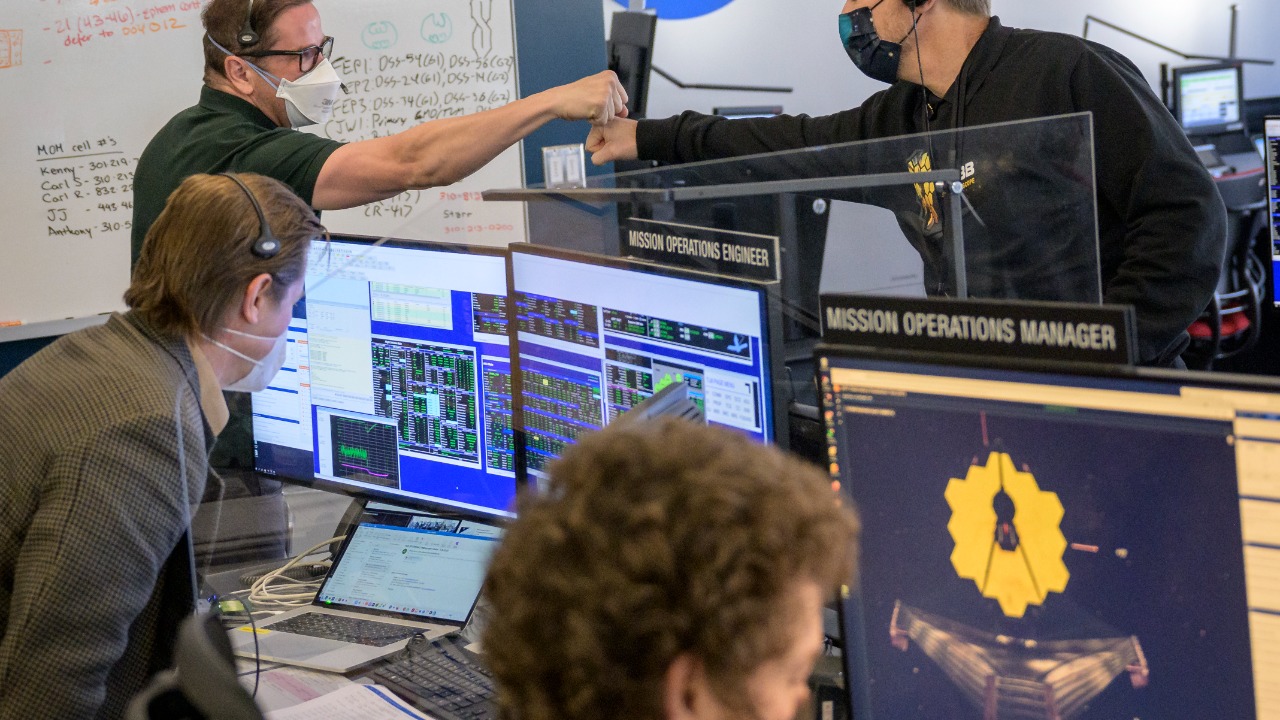
In an unprecedented leap forward in our understanding of the universe’s origins, NASA’s James Webb Space Telescope (JWST) has potentially identified the earliest galaxy ever observed. This galaxy hails from a time when the universe was a mere few hundred million years old, a discovery that builds on earlier hints of the existence of such primordial galaxies.
The James Webb Space Telescope’s Role
The JWST, a marvel of modern astronomy, was launched with the specific purpose of observing the distant infrared light from the early universe. Its capabilities far surpass those of its predecessors, such as the Hubble Space Telescope, in detecting faint, ancient light sources. The JWST’s advanced instruments for spectroscopy and imaging have been instrumental in the exploration of early cosmic structures.
These capabilities have allowed the JWST to peer back in time, to an era when the universe was still in its infancy. The telescope’s advanced technology has opened up new avenues for understanding the universe’s origins and evolution.
Announcement of the Earliest Galaxy Discovery
On June 1, 2025, an official report titled “NASA’s James Webb Space Telescope discovers earliest galaxy ever seen in the universe” was released. This report claimed that the observed galaxy represents the most distant, and thus earliest, known formation in cosmic history. The galaxy’s extreme age was confirmed through initial data analysis, which identified the galaxy’s redshift, a key indicator of cosmic distance and age. source
This discovery is a testament to the JWST’s capabilities and marks a significant milestone in our understanding of the universe’s early history. The identification of this galaxy provides a tangible connection to a time in the universe’s history that was previously only theorized.
Insights from the 2022 Wide-Field Survey
Prior to the JWST’s discovery, a study titled “Wide View of Early Universe Hints at Galaxy Among the Earliest Ever Detected” was published on August 4, 2022. This research, led by the University of Texas, provided preliminary evidence for the existence of primordial galaxies through broad imaging. source
The 2022 wide-field survey laid the groundwork for the JWST’s more precise follow-up observations. The survey’s findings hinted at the presence of galaxies among the very first to form, a hypothesis that the JWST’s discovery has now confirmed.
Characteristics of the Detected Galaxy
The galaxy detected by the JWST is estimated to have formed within the first few hundred million years after the Big Bang. Its morphological features suggest a rapid formation in the dense early universe environment. Spectroscopic evidence indicates the presence of young stars and minimal heavy elements, aligning with theoretical models of early galaxy formation.
The galaxy’s characteristics provide valuable insights into the conditions of the early universe and the processes that led to galaxy formation. These findings will undoubtedly contribute to our understanding of the universe’s evolution and the origins of cosmic structures.
Implications for Galaxy Formation Theories
The discovery of this early galaxy poses a challenge to standard models of galaxy formation. The rapid assembly of this galaxy so soon after the Big Bang may necessitate a revision of timelines for the reionization era, a pivotal period in the universe’s history when the first stars and galaxies began to form.
The galaxy’s light could also provide insights into the role of dark matter halos in accelerating structure growth. These halos, composed of the elusive dark matter, are thought to have played a crucial role in the formation of galaxies and large-scale structures in the universe.
Future JWST Observations and Confirmations
Building on the 2025 discovery, the JWST team plans to conduct deeper surveys to hunt for even earlier galaxy candidates. These efforts will be complemented by collaborative observations with ground-based telescopes, which will provide multi-wavelength verification of the JWST’s findings.
Through ongoing data collection and analysis, the JWST is expected to further advance our understanding of the universe’s “cosmic dawn” phase. This period, marked by the formation of the first stars and galaxies, represents a critical epoch in the universe’s history, the study of which could shed light on the processes that shaped the universe we see today.
More from MorningOverview